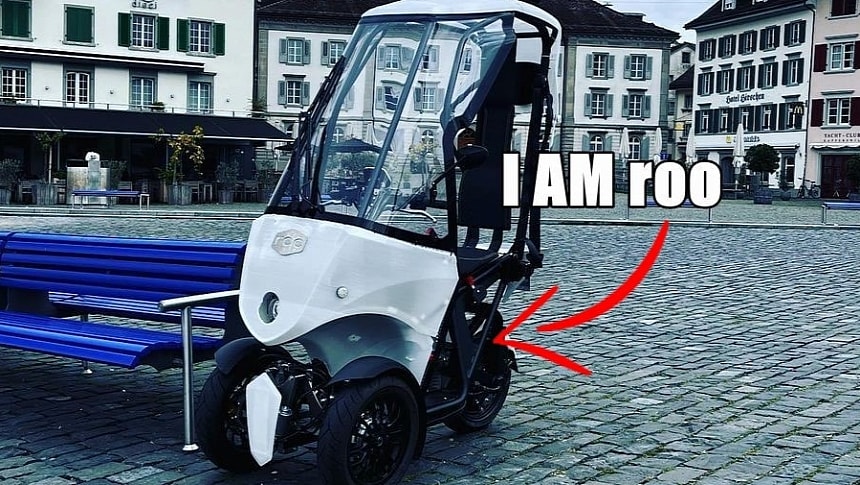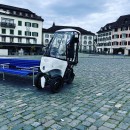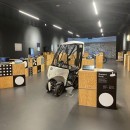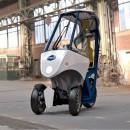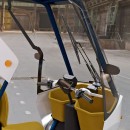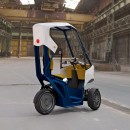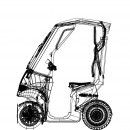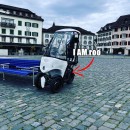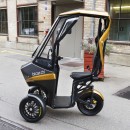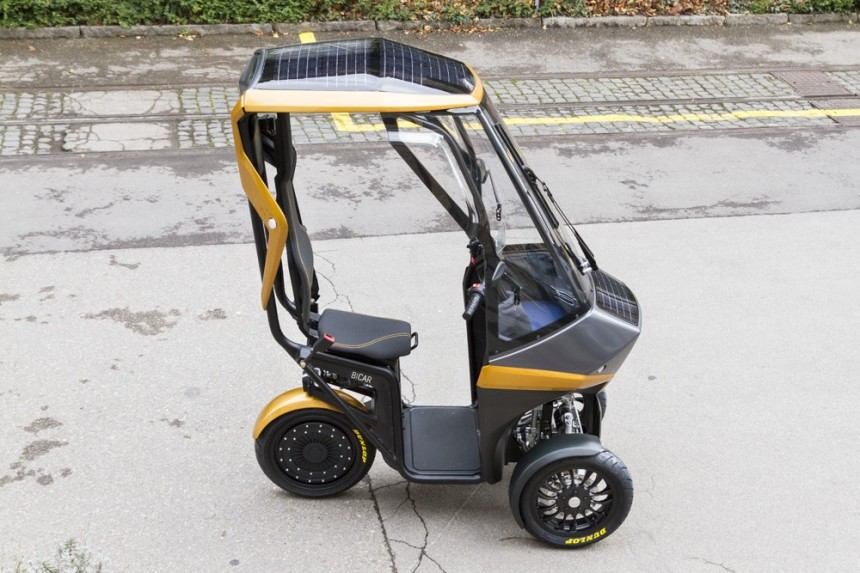As Tesla CEO Elon Musk would say whenever asked about why it was taking so long for the Cybertruck to start deliveries, designing a new vehicle was actually the easy part. The most difficult – and many times downright impossible – part was getting a production-ready version out to market.
If bringing a new vehicle to market is difficult for Tesla, you can imagine it's several times more so for a startup. The road to hell is paved with good intentions and, in the case of many startups, successful milestones that fail to lead to a production-ready model.
The 2019 edition of the Geneva International Motor Show brought much exciting stuff for auto enthusiasts and a little something called the Bicar, a solar-electric small vehicle that aimed to bridge the gap between bicycles and passenger cars. Like many other "carbikes" before it, this EV promised to combine the best qualities of these two modes of transport and repackage them in an enclosed trike that would essentially solve all our modern problems. City-life problems, to be more specific, not all problems.
The Bicar was solar-electric, wrapped around in solar panels that would continuously recharge the battery. When exposure wasn't enough for a considerable charge, there'd be swapping stations that would allow riders to swap a drained battery for a new one. This solution ensured a fully solar and sustainable operation cycle, but it also entailed the existence of a charging network, which is a very difficult feat to pull off on its own.
The Bicar had a 2-kWh in-wheel motor from Gem Motors powered by a 2-kWh 48 V lithium-ion battery and a minimalist interior where the operator's smartphone and the dedicated app would substitute for the usual dashboard gauges.
It was a carbike hybrid vehicle with the most basic functionality, but that was on purpose. The Bicar wanted to be one level better than a bicycle and more convenient than a car, so it was just that. It was a trike with an electric motor, a roof over the operator's head, a windshield, and some safety elements you could never get on an e-bike, like a safety belt.
The Bicar eventually evolved into roo, dubbed the "most space-saving vehicle on the market." The evolution was unveiled in the summer of 2022, together with a new, more streamlined, and sportier design, which included a lighter weight for the entire trike, new color choices, and improved handling.
The roo "springs from a pioneering mindset taking shape around urban mobility." It was fueled by many European cities' policies of banning ICE (internal combustion engine) vehicles or even all cars from city centers and aimed to meet the ongoing demand for personal urban mobility.
The roo was still recognizable as the Bicar, except with a very significant detail: it no longer had solar panels on the roof and the sides. The initial announcement noted that roo would still use a hybrid electric mode, where you could leave it in the sun for 8 hours for a full charge or just plug it in a home socket for charging. The idea of swapping batteries en route had been dropped.
Later on, all plans of solar charging the roo were dropped. The battery was upgraded to a 3.7 kWh one that promised a 60-km (37 miles) range on a single charge. That kind of estimated range seems silly today for even the most casual e-bike rider, but remember, the roo is not an e-bike but a trike that promises to bring some car-like benefits to the daily commute.
These still included a semi-enclosed cabin that offered protection from the elements, though not complete since it still had no doors. They also included a safety belt and integrated back and neck support, with the company promising that roo was safe enough to ride even without a helmet despite the maximum speed of 45 kph (28 mph) and the ability to ride on city streets.
The updated design offered a more streamlined and aerodynamic body, a lighter weight thanks to a custom aluminum frame, and patented tilt tech that ensured easy and safe handling even at tight corners.
Compact to fit standard cycle paths and to park wherever you wanted, the roo could go anywhere – especially in those areas where standard passenger cars had been banned. It was the perfect solution for crowded urban environments, and though small, it still offered a 25-kg (55-lb) cargo capacity, which meant it had a wide range of applicability in everyday life.
At that point, the Zurich-based startup company was still looking for investors and business partners. It was proposing roo as a vehicle ideal both for fleet operations and personal use, though a rumored €10,000 ($10,800 at the current exchange rate) made it less appealing in the latter capacity. Interested business partners could even get a 50-roo fleet free of charge for the next 12 months once they came onboard.
And then, the roo went dark. The company stopped offering updates on developments and progress early in 2023, and the website for the trike is no longer taking pre-orders or offering any details on it except for a brief presentation. By the looks of things, as promising as it might've been, the roo couldn't make that difficult trek from prototype to production version, for whatever reason.
We reached out to check on the status of the project, and we will update the story when and if we hear back.
The 2019 edition of the Geneva International Motor Show brought much exciting stuff for auto enthusiasts and a little something called the Bicar, a solar-electric small vehicle that aimed to bridge the gap between bicycles and passenger cars. Like many other "carbikes" before it, this EV promised to combine the best qualities of these two modes of transport and repackage them in an enclosed trike that would essentially solve all our modern problems. City-life problems, to be more specific, not all problems.
The Bicar was solar-electric, wrapped around in solar panels that would continuously recharge the battery. When exposure wasn't enough for a considerable charge, there'd be swapping stations that would allow riders to swap a drained battery for a new one. This solution ensured a fully solar and sustainable operation cycle, but it also entailed the existence of a charging network, which is a very difficult feat to pull off on its own.
It was a carbike hybrid vehicle with the most basic functionality, but that was on purpose. The Bicar wanted to be one level better than a bicycle and more convenient than a car, so it was just that. It was a trike with an electric motor, a roof over the operator's head, a windshield, and some safety elements you could never get on an e-bike, like a safety belt.
The Bicar eventually evolved into roo, dubbed the "most space-saving vehicle on the market." The evolution was unveiled in the summer of 2022, together with a new, more streamlined, and sportier design, which included a lighter weight for the entire trike, new color choices, and improved handling.
The roo was still recognizable as the Bicar, except with a very significant detail: it no longer had solar panels on the roof and the sides. The initial announcement noted that roo would still use a hybrid electric mode, where you could leave it in the sun for 8 hours for a full charge or just plug it in a home socket for charging. The idea of swapping batteries en route had been dropped.
Later on, all plans of solar charging the roo were dropped. The battery was upgraded to a 3.7 kWh one that promised a 60-km (37 miles) range on a single charge. That kind of estimated range seems silly today for even the most casual e-bike rider, but remember, the roo is not an e-bike but a trike that promises to bring some car-like benefits to the daily commute.
The updated design offered a more streamlined and aerodynamic body, a lighter weight thanks to a custom aluminum frame, and patented tilt tech that ensured easy and safe handling even at tight corners.
Compact to fit standard cycle paths and to park wherever you wanted, the roo could go anywhere – especially in those areas where standard passenger cars had been banned. It was the perfect solution for crowded urban environments, and though small, it still offered a 25-kg (55-lb) cargo capacity, which meant it had a wide range of applicability in everyday life.
And then, the roo went dark. The company stopped offering updates on developments and progress early in 2023, and the website for the trike is no longer taking pre-orders or offering any details on it except for a brief presentation. By the looks of things, as promising as it might've been, the roo couldn't make that difficult trek from prototype to production version, for whatever reason.
We reached out to check on the status of the project, and we will update the story when and if we hear back.
